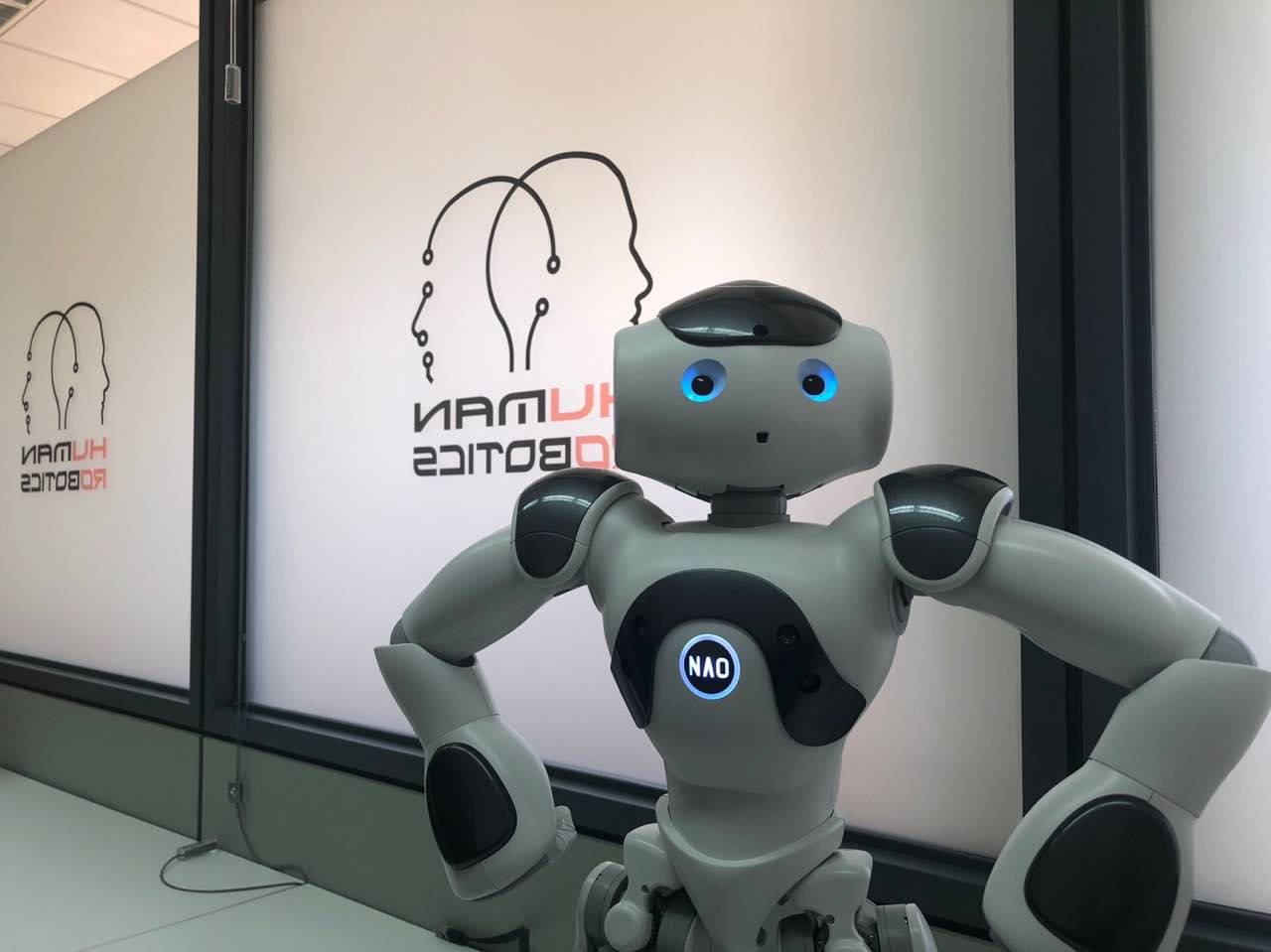NAHURO
September 6, 2018

We have a new robot in our laboratory. Nao is an autonomous, programmable humanoid and full actuated biped robot developed by Aldebaran Robotics. NAO has inertial measurement with accelerometers, gyrometers and ultrasonic sensors that provide Nao with stability and positioning within space. Nao has a total of 25 degrees of freedom (DoFs), is 58 cm tall, and about 5 kg of mass. The structure of NAO consists of a head with two joints, two symmetrical upper and lower limbs with six and five joints respectively, and a trunk with one joint in its pelvis. In each of NAO’s arms, 2 DoFs are located at the shoulder, 2 DoFs at the elbow, and 1 DoF at the wrist, while an additional DoF is assigned to the hand for grasping. Each leg has 2 DoFs located at the hip, 1 DoF at the knee and 2 DoFs at the ankle.
NAO’s hardware platform is equipped with different sensors: two cameras, four directional microphones, sonar rangefinder, two infra red (IR) emitters and receivers, one inertial measurement unit (comprising a two axis gyroscope and a three axis accelerometer), nine tactile sensors and eight pressure sensors. The cameras are identical and embedded in its head. The “top camera”, located in the forehead, provides a view of the horizon and the “bottom camera” located in the mouth and directed downward, senses the immediate surrounding of the robot. Both cameras can take up to 30 frames per second.
The pressure sensors, located at the sole of each foot (four per foot), can be used to compute the position of the robot’s center of pressure (CoP or ZMP), which an important indicator of balance and stability. NAO robot has an omnidirectional walking ability. The joints sensors information and the CoP position are used in feedback to stabilize the robot about the generated walking trajectories. This improves the robustness of the walking to small disturbances and allows the robot to walk on different surfaces (tiles, carpet, etc.).
NAO (or “NAHURO”) is our last humanoid robot that will allow to improve our research line about social robotics, humanoids and robots in domestic workspaces. The robot has 25 degrees of freedom and we are currently developing the following projects with the robot:
- Modeling and Control of Biped Humanoid Robot. Balance and locomotion control.
- Research in human-robot cooperation approaches: Security strategies and collaborative human-robot tasks.
- Research in social robotic behaviours for improving the motivation and helping the patients in hospital workspaces.
- Research in visual servoing taking into account humanoid robot dynamics.
- Increase the robustness of current visual servoing systems for its application in non-structured workspaces.
Human Robotics Group - University of Alicante
Contact us
-
Human Robotics
UA Polytechnic School 3
Physics, Systems Engineering and Signal Theory Department
University of Alicante
Ctra San Vicente del Raspeig s/n
San vicente del Raspeig
03690 Alicante, Spain. -
(+34) 965 903 400 Ext. 1094
-
huro@ua.es
-
Week Days : 09:00 – 18:00
Saturday, Sunday : Holiday




